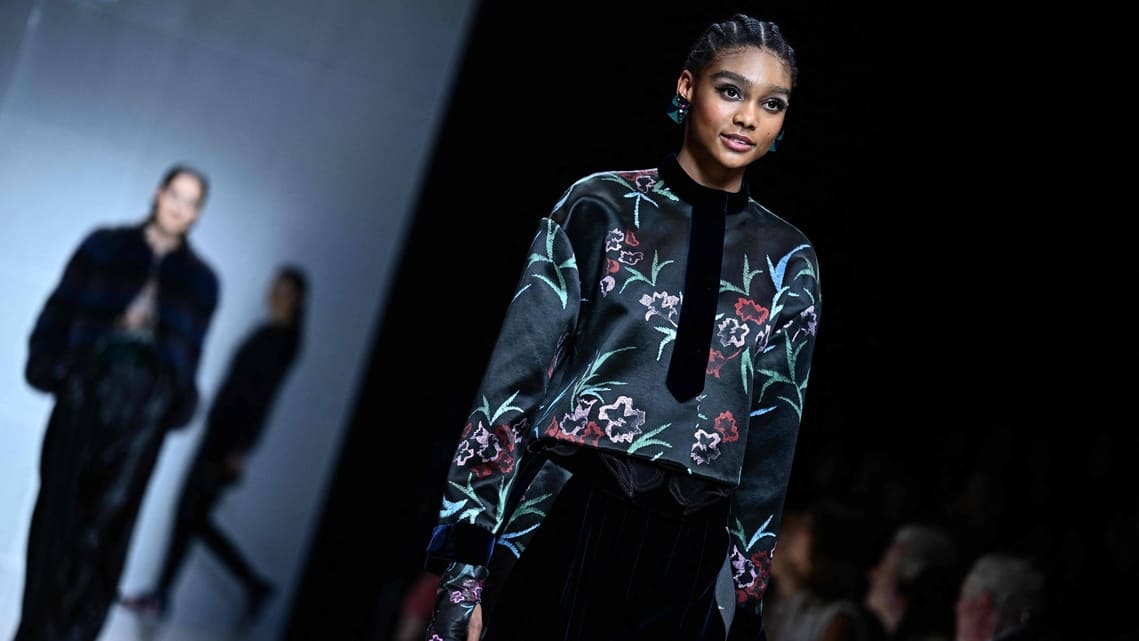
The designer said he chose the motif of winter flowers as an expression of resistance and contrast
Giorgio Armani’s collection for the next cold weather season, previewed on the last day of Milan Fashion Week on Sunday, embraces the designer’s love of nature and admiration of Asian cultures expressed in his trademark flowing and flattering tailoring.
Think garden party for the daytime looks, with pretty embroidered shoes and hats complementing ensembles of unstructured jackets and textured trousers accented by obi belts.
A dragonfly motif landed on a field of flowers in one dark velvet look, and a couture-worthy jacket was constructed out of three-dimensional organza flowers. Evening wear glittered like so many fireflies.
Armani said he chose winter flowers as a motif as an expression of resistance and contrast, and because everyone loves a flower.
“I believe that all of you would love to have a black jacket with embroidered colored flowers that … announces a better season,” Armani told journalists after the show.
Armani, who turns 90 this summer, said he finds the job as challenging as he did when he launched more than four decades ago, acknowledging the quest to satisfy his own expectations is exhausting. He said he worked for eight months on one floral element.
“This work is tiring, and I am still not happy,’’ the designer said. “If you come to the next show, I will have changed something.”
Front-row guests at the second show, benefitting from Armani’s own fine-tuning, included Cate Blanchett, a frequent house guest, Italian rocker Victoria De Angelis, actor Aaron Taylor-Johnson, director Sam Taylor-Johnson and French actor Louis Garrel.
Armani for years has anchored the last day of fashion week, with most editors abandoning Milan for Paris, the next fashion week stop.
Armani said he had written to the Italian fashion council to extend Milan Fashion Week by a day to improve the flow.
This week of previews has been plagued by far-flung shows, forcing the fashion fleet of sedans and shuttles to traverse the city multiple times, complicated by anti-war demonstrations, a transport strike and rain that snarled traffic, which led to delays in the schedule of over an hour.
